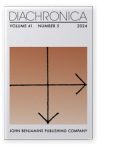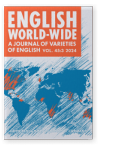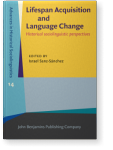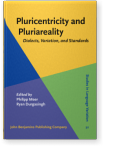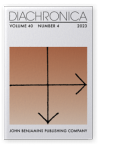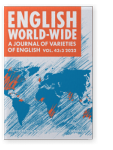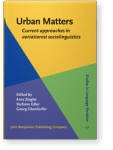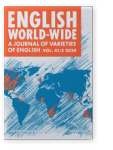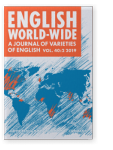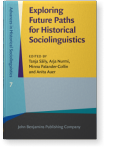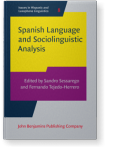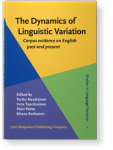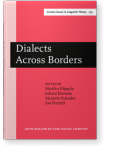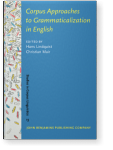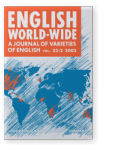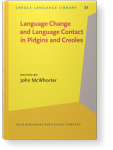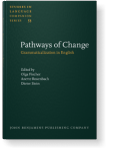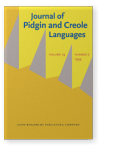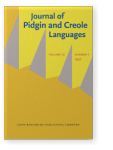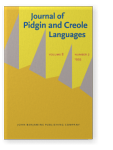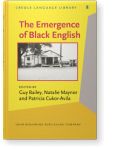Sali A. Tagliamonte
List of John Benjamins publications for which Sali A. Tagliamonte plays a role.
Journals
ISSN 0172-8865 | E-ISSN 1569-9730
Book series
2023 Diachrony and Diachronica: 40@40 Diachronica 40:4, pp. 557–568 | Editorial
2022 He come out and give me a beer but he never seen the bear: Vernacular preterites in Ontario dialects English World-Wide 43:3, pp. 267–296 | Article
In this study, we examine variation in English strong verb preterite/participle morphology in four frequent verbs: came/come, saw/seen, gave/give and did/done, using data from more than a dozen Ontario communities, socially stratified by age, sex, occupation and education, representing a… read more
2022 Dialects as a mirror of historical trajectories: Canadian English across Ontario (North America) Earlier North American Englishes, Kytö, Merja and Lucia Siebers (eds.), pp. 231–258 | Chapter
A multi-year project on dialects in Ontario, Canada demonstrates how synchronic variation mirrors historical trajectories of change. Three linguistic features are examined, come vs. came, adjectives of smallness and 3rd person male referents. Using quantitative methods and a comparative… read more
2021 Urban-rural dimensions to variable -body/-one : The case of Ontario, Canada Urban Matters: Current approaches in variationist sociolinguistics, Ziegler, Arne, Stefanie Edler and Georg Oberdorfer (eds.), pp. 141–158 | Chapter
English pronominal quantifier doublets (some/any/every/no- + -body/-one) have been variable since Middle English. Previous research (D’Arcy et al. 2013; see also Biber et al. 1999) shows varying patterns of -body and -one by region and quantifier, with an overall slow progression toward -one and… read more
2020 The bike, the back, and the boyfriend: Confronting the “definite article conspiracy” in Canadian and British English English World-Wide 41:2, pp. 225–254 | Article
Using comparative sociolinguistic methods, we probe the underlying mechanisms governing the variation between possessive determiners,
my bike, and the definite article,
the bike, in possessive contexts in two mainstream English varieties (Canadian and British English, N = 6,217). read more
2019 Supper or dinner? Sociolinguistic variation in the meals of the day English World-Wide 40:2, pp. 170–201 | Article
The English words for daily meals constitute a complex lexical variable conditioned by social and linguistic factors. Comparative sociolinguistic analysis of 884 speakers from more than a dozen locations in Ontario, Canada reveals a synchronic system with social correlates that are reflexes of… read more
2019 Chapter 27. Roots and branches of variation across dialects of English Historical Linguistics 2015: Selected papers from the 22nd International Conference on Historical Linguistics, Naples, 27-31 July 2015, Cennamo, Michela and Claudia Fabrizio (eds.), pp. 593–614 | Chapter
In this chapter, I outline the Variationist Sociolinguistic approach and how it can probe questions of relevance to historical linguistics. Analysis of spoken language corpora from three geographic regions, the United Kingdom (UK), Canada and the Caribbean are the basis of investigation. The… read more
2018 Near done; awful stable; really changing: The suffixless adverb in dialects of the UK Diachronica 35:1, pp. 107–143 | Article
This paper examines adverb formation with -ly, e.g., slow/slowly, and uses a large archive of synchronic dialects to uncover the current state and historical trajectory of this process. The results reveal that English adverbs are a variegated system. The intensifying adverb really is a frequent… read more
2017 A lost Canadian dialect: The Ottawa Valley 1975–2013 Exploring Future Paths for Historical Sociolinguistics, Säily, Tanja, Arja Nurmi, Minna Palander-Collin and Anita Auer (eds.), pp. 239–274 | Chapter
Ottawa Valley English (OVE), a rural regional dialect enclave in Ontario, Canada, is under threat from social change, including urban sprawl and the encroachment of standard Canadian English. Using a trend study with two samples collected 30–35 years apart, we conduct a variationist sociolinguistic… read more
2016 Quantitative analysis in language variation and change Spanish Language and Sociolinguistic Analysis, Sessarego, Sandro and Fernando Tejedo-Herrero (eds.), pp. 3–32 | Article
The essential goal of variation analysis is to understand the behavior of the dependent variable according to a series of factors, either external (social) or internal (grammatical), (Sankoff, 1988, p. 985). I begin with a brief review of the standard tool, logistic regression using the Varb family… read more
2014 Review of Szmrecsanyi (2013): Grammatical variation in British English dialects Diachronica 31:4, pp. 579–583 | Review
2008 Conversations from the speech community: Exploring language variation in synchronic dialect corpora The Dynamics of Linguistic Variation: Corpus evidence on English past and present, Nevalainen, Terttu, Irma Taavitsainen, Päivi Pahta and Minna Korhonen (eds.), pp. 107–128 | Article
Using a corpus of synchronic dialects from England, Scotland and Northern Ireland (the Roots Archive) I present a quantitative distributional analysis of a series of morpho-syntactic changes: verbal -s (1), causal conjunctions (2), relative clauses (3), the modals of necessity (4), stative… read more
2007 The modals of obligation/necessity in Canadian perspective English World-Wide 28:1, pp. 47–87 | Article
The modal verbs of English have been undergoing change since the Late Old English and Early Middle English periods. Recent research suggests dramatic recent developments, particularly in American English. In this paper, we focus on the encoding of obligation/necessity, which involves the layering… read more
2006 Layering, competition and a twist of fate: Deontic modality in dialects of English Diachronica 23:2, pp. 341–380 | Article
This paper examines an area of ongoing change in English — deontic modality — and uses an archive of synchronic dialect data from England, Scotland and Northern Ireland to discover new information about its development. History records a cline in this system from must to have to to have got to. By… read more
2005 English dialects in the British Isles in cross-variety perspective: A base-line for future research Dialects Across Borders: Selected papers from the 11th International Conference on Methods in Dialectology (Methods XI), Joensuu, August 2002, Filppula, Markku, Juhani Klemola, Marjatta Palander and Esa Penttilä (eds.), pp. 87–117 | Article
2004 Have to, gotta, must? Grammaticalisation, variation and specialization in English deontic modality Corpus Approaches to Grammaticalization in English, Lindquist, Hans and Christian Mair (eds.), pp. 33–55 | Article
Quantitative analysis of forms used to express obligation/necessity in a variety of northern British English reveal that must is decreasing across generations. Instead of a marked increase in got to and gotta as reported for southern varieties of British English, these forms are used very little.… read more
2002 Either it isnt or its not: neg/aux contraction in British dialects English World-Wide 23:2, pp. 251–281 | Article
The source dialects in Britain are critical to disentangling the history and development of varieties in North America and elsewhere. One feature which appears to provide a critical diagnostic, particularly for situating dialects geographically in Britain, is negative (neg) vs. auxiliary (aux)… read more
2000 The Story of kom in Nigerian Pidgin English Language Change and Language Contact in Pidgins and Creoles, McWhorter, John H. (ed.), pp. 353–382 | Article
2000 The grammaticalization of the present perfect in English: Tracks of change and continuity in a linguistic enclave Pathways of Change: Grammaticalization in English, Fischer, Olga, Anette Rosenbach and Dieter Stein (eds.), pp. 329–354 | Article
1997 Plural Marking Patterns in Nigerian Pidgin English Journal of Pidgin and Creole Languages 12:1, pp. 103–129 | Article
This paper examines the pluralization system of Nigerian Pidgin English (NPE). Extrapolating from proposals in the literature on English-based créoles as well as other vernaculars, we utilize quantitative methodology to assess the contribution of syntactic, semantic, and phonological features to… read more
1993 African American English in the diaspora: Evidence from oldline Nova Scotians Focus on Canada, Clarke, Sandra (ed.), pp. 109–150 | Article
1993 The Zero-Marked Verb: Testing the Creole Hypothesis Journal of Pidgin and Creole Languages 8:2, pp. 171–206 | Article
This paper examines the past temporal reference system in two data sets representing "early" Black English: Sarnana and the Ex-slave Recordings, with a view to discovering the structure underlying variable use of overt verbal morphology. Extrapolating from proposals in the literature on the… read more
1991 There’s No Tense Like the Present: Verbal — S Inflection in Early Black English The Emergence of Black English: Text and commentary, Bailey, Guy, Natalie Maynor and Patricia Cukor-Avila (eds.), pp. 275–326 | Article
